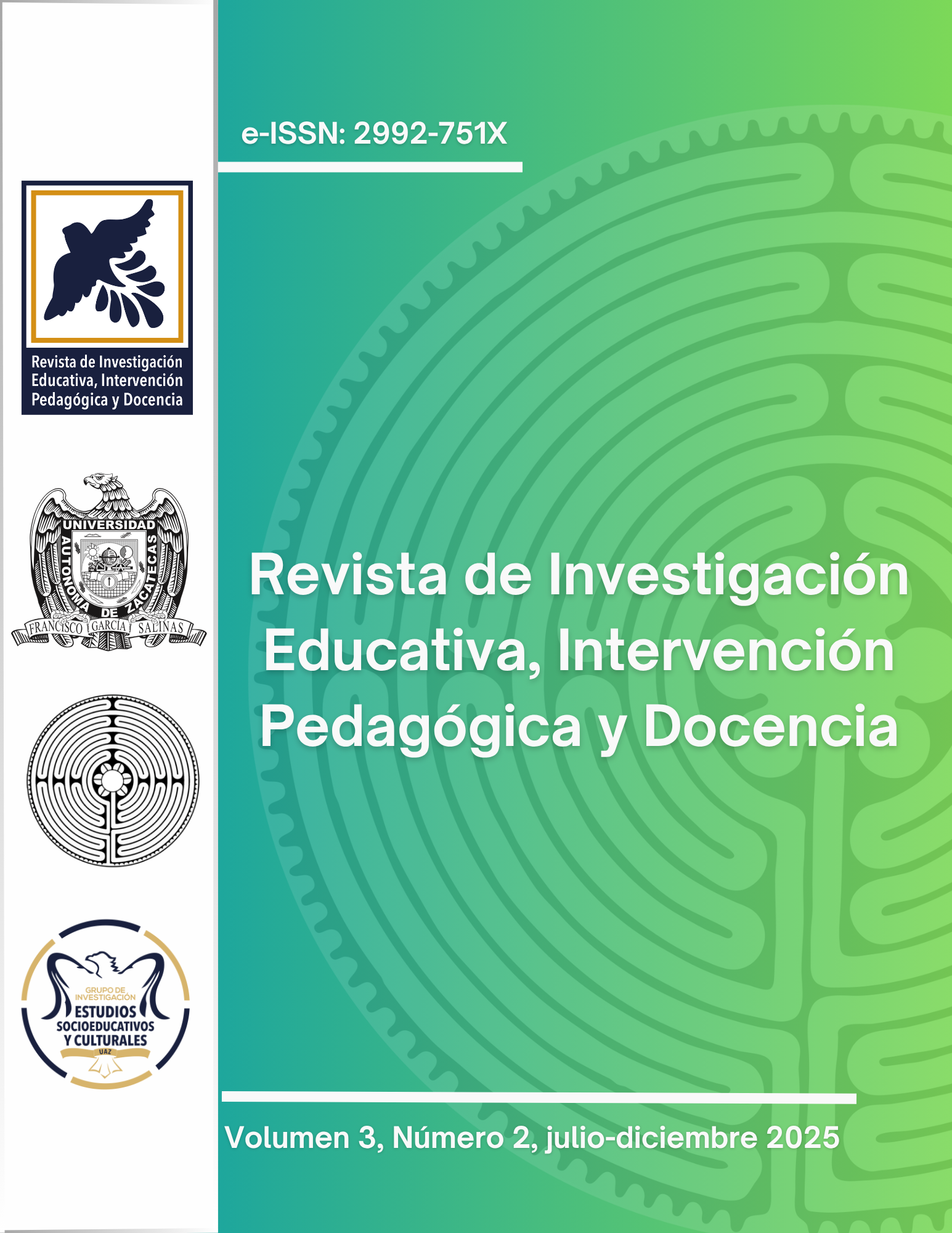Analysis of quality of life perspectives in the educational context: a theoretical reflection
Published 2025-07-04 — Updated on 2025-08-27
Versions
- 2025-08-27 (3)
- 2025-08-13 (2)
- 2025-07-04 (1)
Keywords
- Quality of life,
- Education,
- Capability Approach
Copyright (c) 2025 Juan José Mendoza Rodríguez, Jesús Alberto García García

This work is licensed under a Creative Commons Attribution-NonCommercial-ShareAlike 4.0 International License.
How to Cite
Abstract
humano, permitiendo a los individuos realizar sus potencialidades y aspiraciones a través de la libertad y justicia social.
PALABRAS CLAVE: Calidad de vida, Educación, Enfoque de las Capacidades.
ABSTRACT
Addressing the phenomenon of quality of life within the educational context is essential to ensuring the holistic well-being of students, improving academic outcomes, promoting inclusion and equity, preparing students for adulthood, and fulfilling the social responsibility of educational institutions. It is a critical dimension that must be considered and prioritized at all levels of the educational system. Amartya Sen and Martha Nussbaum (1993) are theoretical references for the study of quality of life due to their innovative and comprehensive approaches that go beyond traditional measures of economic well-being. Both theoretical frameworks lead to a more complete and individual-focused assessment by considering autonomous decision-making, the actual opportunities provided by the environment, and individuals' capacity to lead lives they value and desire. As society seeks to enhance the well-being of its members, it is crucial to recognize the importance of this theoretical proposition and its application in various social settings, particularly within the educational context. From Nussbaum and Sen's sociocritical perspective, quality of life in education should be seen to human flourishing, enabling individuals to realize their potentials and aspirations through freedom and social justice.
Downloads
References
- Alvarado, L., & García, M. (2008). Características más relevantes del paradigma socio-crítico: su aplicación en investigaciones de educación ambiental y de enseñanza de las ciencias realizadas en el Doctorado de Educación del Instituto Pedagógico de Caracas. Sapiens Revista Universitaria de Investigación, 9(2), 187-202.
- Andrews, F. M., & Withey, S. B. (1976). Social Indicators of Well-Being: Americans' Perceptions of Life Quality. Springer.
- Arostegui, I. (1998). Evaluación de la calidad de vida en personas adultas con retraso mental en la comunidad autónoma del País Vasco. Bilbao, España: Universidad de Deusto.
- Blanco Abarca, A. (1985). La calidad de vida: supuestos psicosociales. En F. Morales, A. Blanco, C. Huici, & J. Fernandez, Psicología social aplicada (págs. 159-182). Bilbao: Desclée de Brouwer.
- Bestuzev-Lada, I. (1980). Way of Life and related Concepts as Part of a System of Social Indicators. En S. Szalai, & F. Andrews, The Quality of life: comparative studies (págs. 159-170). Sage Publications.
- Bicocca, M. (2018). Competencias, capacidades y Educación Superior. Repensando el desarrollo humano en la universidad. Estudios sobre educación, 34, 29-46.
- Bordieu, P. (1984). La dernière instance. En C. G. Pompidou, Le siècle de Kafka (págs. 268-270).
- Bowling, A. (2005). Measuring health: A review of quality of life measurement scales. Maidenhead, U.K.: Open University Press.
- Comisión Mundial sobre el Medio Ambiente y el Desarrollo. (1987). Nuestro futuro común. Oxford University Press.
- Dalkey, N., & Rourke, D. (1973). The quality of life concept. Washington, DC, USA: Environmental Protection Agency.
- Denzin, N., Lincoln, Y., Giardina, M., & Cannella , G. (2023). The Sage Handbook of Qualitative Research. Sage Publications.
- Felce, D., & Perry, J. (1995). Quality of life: its definition and measurement. Research in Developmental Disabilities, 16(1), 51-74.
- Lawton, M. (2001). Emotion in later life. Current Directions in Psychological Science, 120–123.
- Nussbaum, M. (2010). Not for Profit: Why Democracy Needs the Humanities. Princeton University Press.
- Nussbaum, M. (2012). Las mujeres y el desarrollo. Herder.
- Nussbaum, M. (2012). Crear capacidades. . Barcelona: Paidós.
- Osorio-Alcalde, J. (2016). Libro: la calidad de vida Autores: Martha Nussbaum y Amartya Sen. Revista Eleuthera, 14, 129-132.
- Programa de las Naciones Unidas para el Desarrollo. (2021). Informe 2020: Programa de las Naciones Unidas para el Desarrollo.
- Rodriguez Marin, J., Pastor, M., & Lopez Roing, S. (1993). Afrontamiento, apoyo social, calidad de vida y enfermedad. Psicothema, 349-372.
- Schalock, R. (1996). Quality of life. Vol. 1: Its conceptualization, measurement and use. Washington, D.C.: American Association on Mental Retardation.
- Sen, A. (2000). Desarrollo y Libertad. Planeta.
- Szalai, S., & Frank M., A. (1980). The Quality of life: comparative studies. London: Sage Publications.
- Urzua, M., & Caqueo-Urizar, A. (2012). Calidad de vida: Una revisión teórica del concepto. Terapia Psicológica, 30(1), 61-71.
- World Health Organization. Office of World Health Reporting. (2002). Informe sobre la salud en el mundo: 2002: reducir los riesgos y promover una vida sana. Organización Mundial de la Salud.


